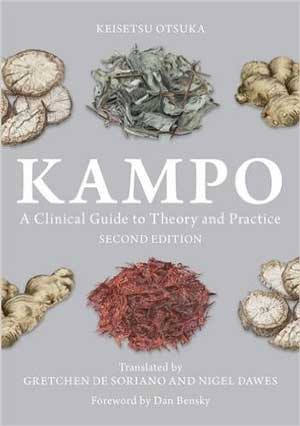Kampo
Books about Kampo medicine
Books about Japanese medicinal herbs
Books on Japanese medicinal herbs, such as Otsuka on Kampo medicine, describe the mode of action and use of Japanese herbs in Traditional Chinese Medicine. Kampo medicine is called in Japan, the medicinal plant treatment. Here medicinal plants are used therapeutically according to traditional recipes in the form of decoctions or extra products. This medicine was taken over from China over 1500 years ago and further developed independently in Japan. The Japanese refined the pragmatic reduction of application guidelines and the number of plants used. Today, the Kampo medicine is a part of modern medicine and may only be prescribed by doctors. In the Kampomedizin body and mind is regarded as a unity and seen as holistic therapy. Especially the exact anamnesis is very important here. The examination of the abdomen is the focus here. The Japanese call the belly hara, which is considered the center of life. The ventricular diagnostics (fukushin) is a special Japanese achievement and the heart of the diagnostics. The overall picture of the anamnesis-collected symptoms and clinical signs now yields a complaint profile, which is referred to in camp medicine as shô. For each sho, Kampo medicine knows one or more associated formulas. Ideally, the complaint profile shô matches the recipe’s action profile like a key to the lock. Traditional concepts of East Asian medicine have taken a back seat here, but their knowledge is helpful in understanding the constitution of the patient and differentiating current stages of the disease.
The main indications are:
- a variety of chronic and functional diseases
- allergies
- autoimmune diseases and
- use in geriatrics.
The traditional pharmaceutical preparation of the Kampo agents is the raw drug mixture of the effective proportions of the respective medicinal plants. Some substances come from the realm of minerals, few are of animal origin. In general, the plant parts are dried and crushed, often subjected to further pharmaceutical treatment. The traditional Kampo formulations, which are applied from several individual substances as a decoction or extract, act as a therapeutic unit. Synergistic interactions between the individual components favor the overall effect of the mixture and increase the bioavailability of the individual ingredients. The origins of Kampo medicine go back to the Chinese cultural export, which reached the Japanese Yamato Empire in the 5th century AD. Among the Chinese immigrants were scholars who spread not only
- Chinese writing,
- Confucian beliefs, and
- the Buddhist religion,
- but also medical knowledge.

